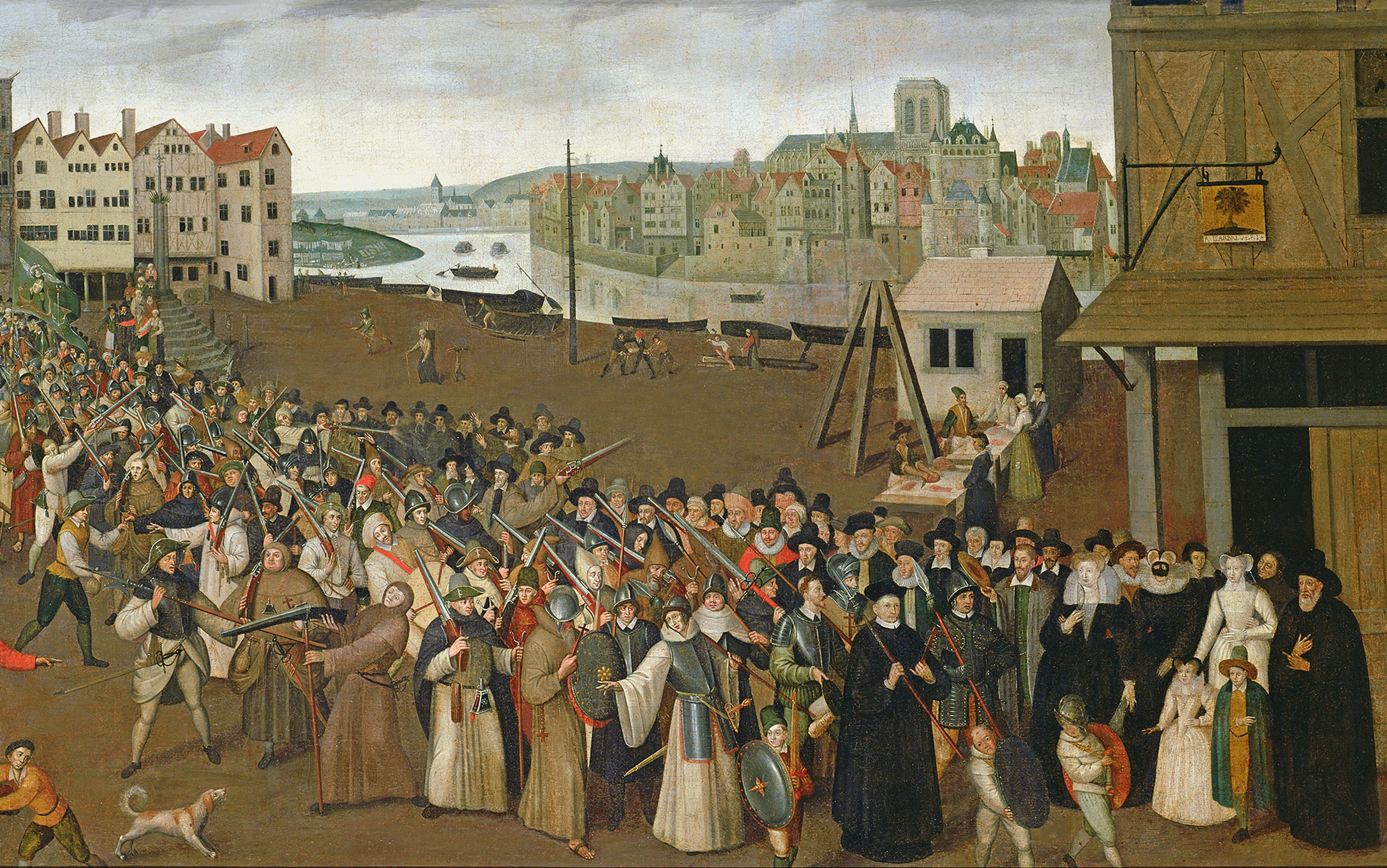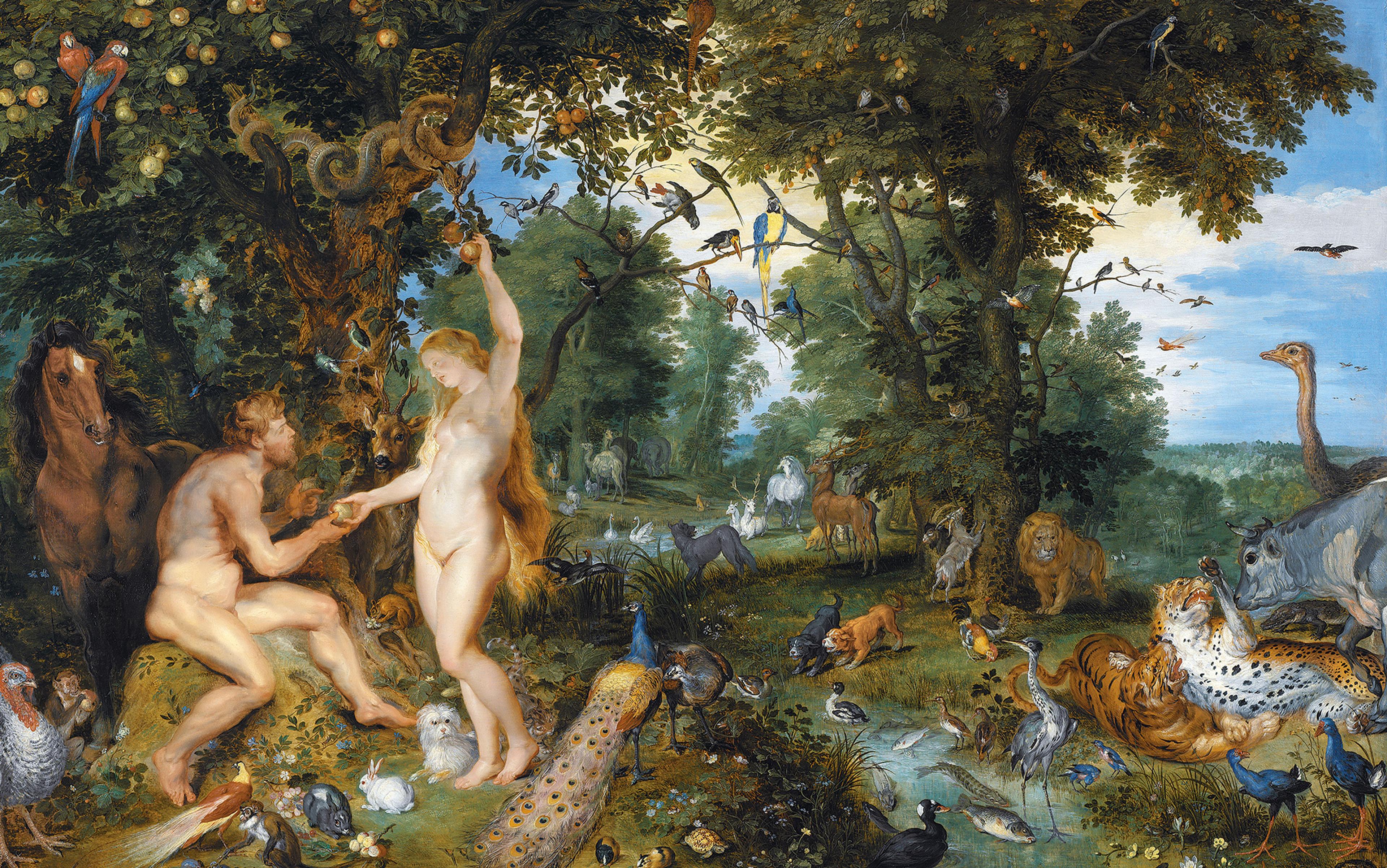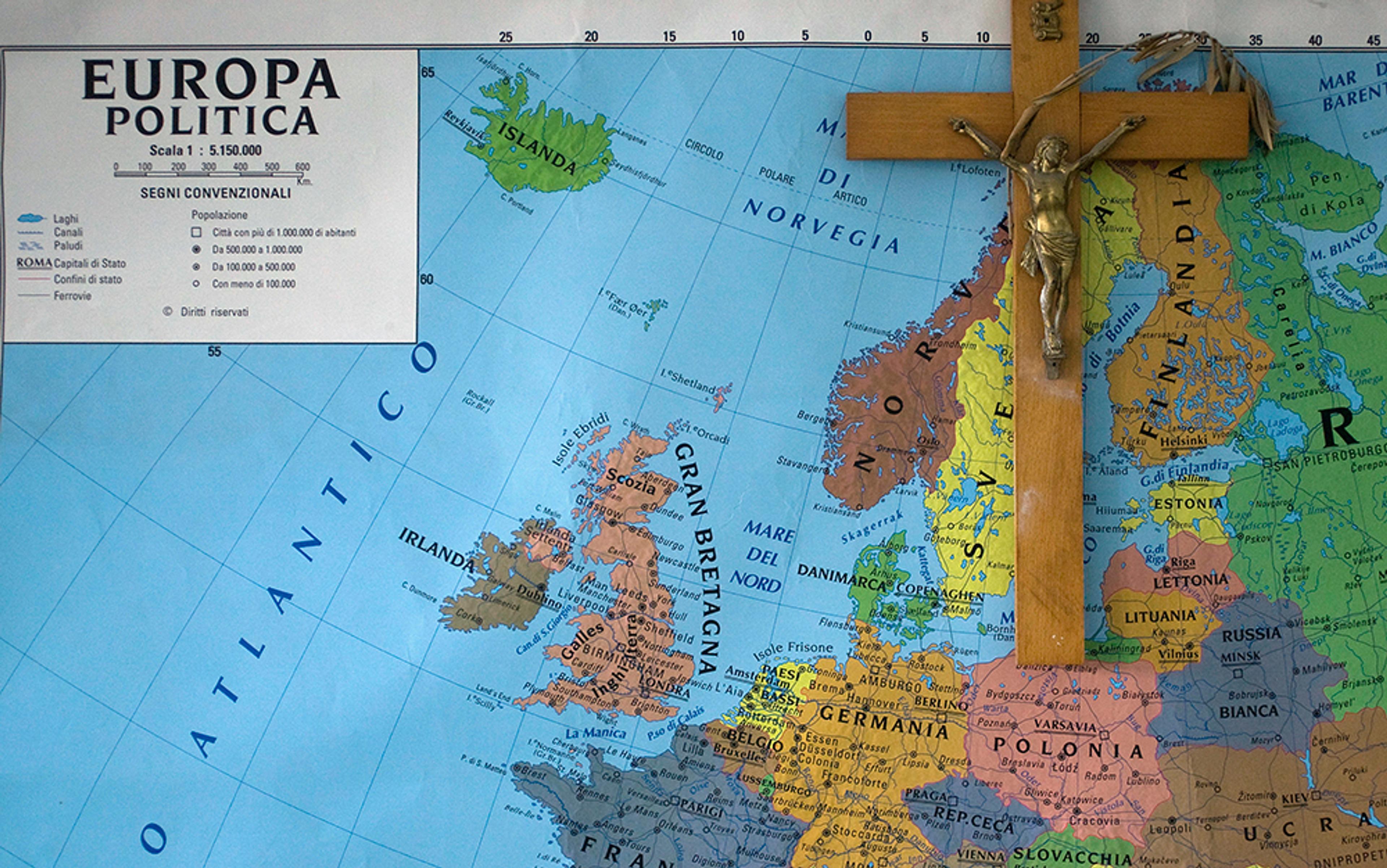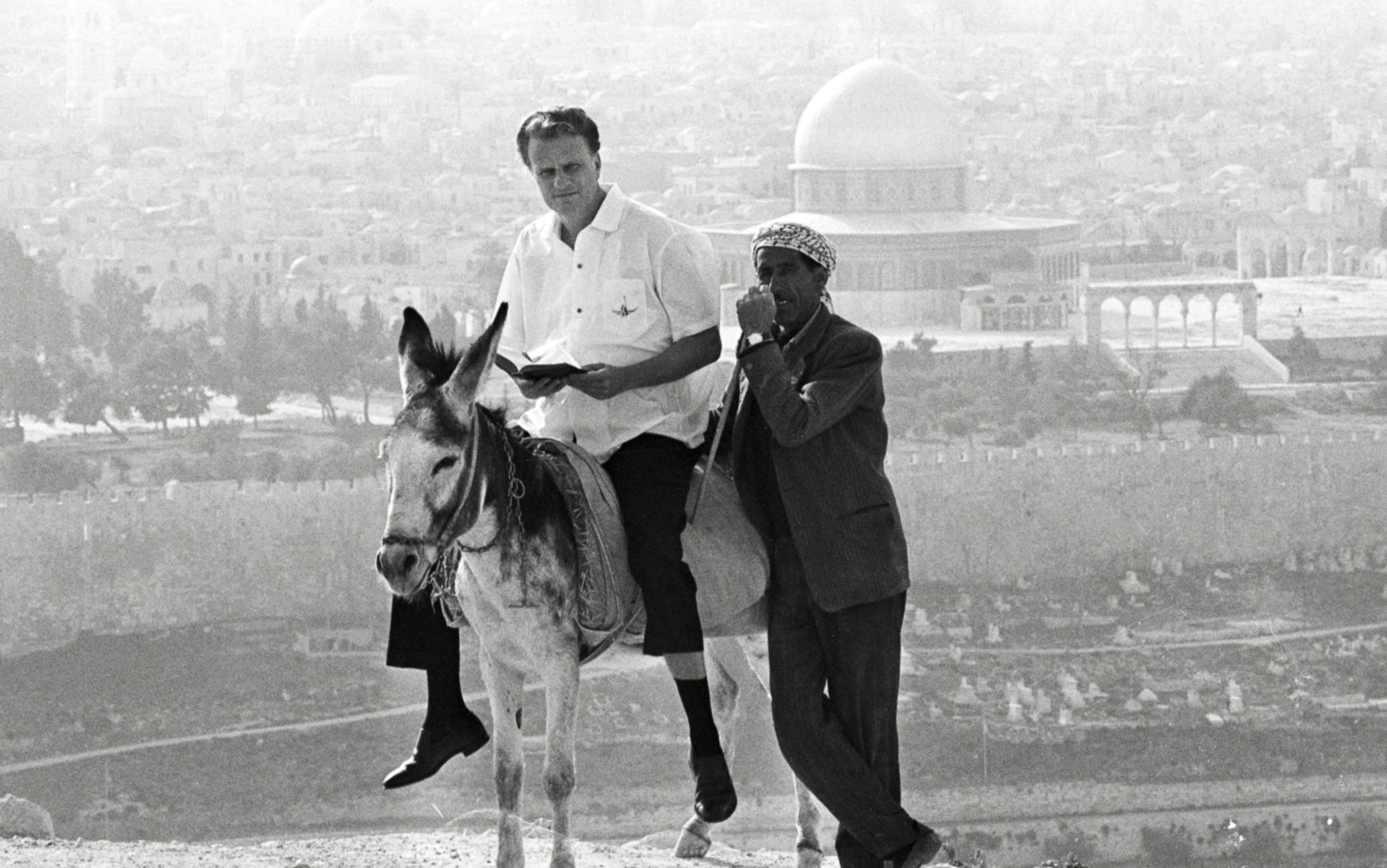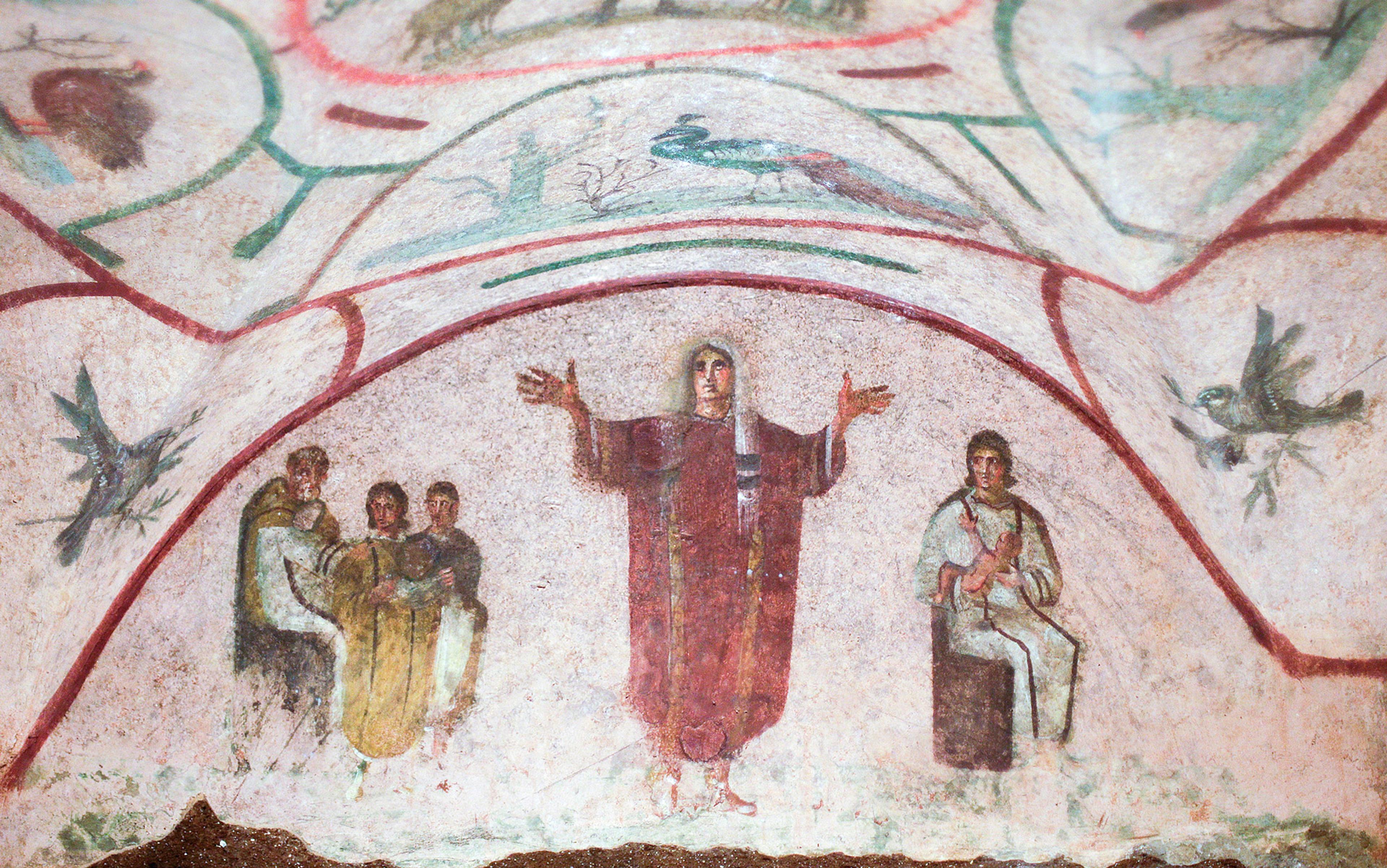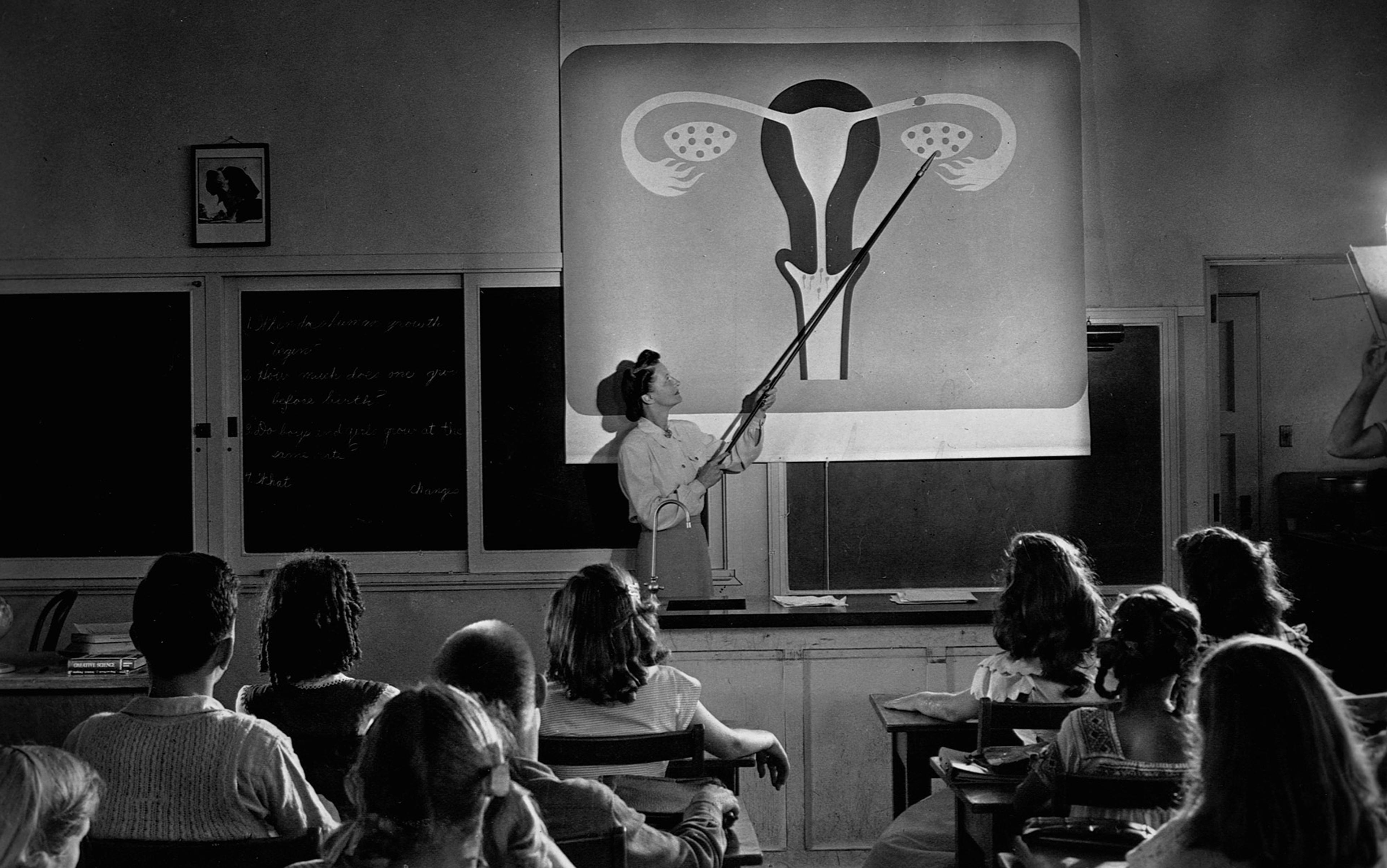In the middle of the 20th century, a prolonged animosity came to an end. For more than four centuries, the enmity between Catholics and Protestants, known to theologians as the two confessions, had been one of the organising principles of European life. But, then, it stopped.
To grasp just how revolutionary this inter-Christian peace was, it’s worth remembering what came before it. Because the mutual hatred between the confessions shaped not only the early modern era, when gruesome acts of violence like St Bartholomew’s Day (1572) and the Thirty Years’ War (1618-48) tore Europe apart. Anti-Catholicism and anti-Protestantism remained powerful forces well into the late 19th and early 20th centuries, and shaped social and political life. The most extreme case was Germany, where the Protestant majority in 1871 unleashed an aggressive campaign of persecution against the Catholic minority. For seven years, state authorities expelled Catholic orders, took over Catholic educational institutions, and censored Catholic publications.
In the Netherlands, Protestant crowds violently attacked Catholic processions; in Austria, a popular movement called ‘Away from Rome’ began a (failed) campaign in 1897 to eradicate Catholicism through mass conversion. Catholics, for their part, were just as hostile to Protestants. In France, Catholic magazines and sermons blamed Protestants for treason, some even called for stripping them of citizenship. Business associations, labour unions and even marching bands were often divided across confessional lines.
Even on an everyday level, it still was common into the 20th century for neighbourhoods, parties and magazines to be strictly Catholic or Protestant. Prominent politicians and lay writers routinely blamed the other confession for backwardness, subversion and sexual perversity. A prominent German historian even claimed, in the 1860s, that Catholics and Protestants were descendants of different races.
But then, by the 1950s, this mutual disdain ended. The two confessions reconciled, lay leaders established joint organisations, and politicians even founded powerful interconfessional political parties. Even Church authorities, who for a while dragged their feet, ultimately came around. The Catholic Church, during the Second Vatican Council, officially declared in 1964 that Protestants were not heretics, but brethren in faith. Only in Northern Ireland did anti-Catholicism and anti-Protestantism remain powerful, a remarkable exception that proved the rule.
How did this shocking change come about? After four centuries of division, why did old animosities die so quickly? It’s easy to presume that this dramatic shift happened after the Second World War and was part of Europe’s broader liberalisation. After the trauma of Nazism and Stalinism, we may think, many Europeans came to appreciate pluralism. Or one might imagine that Catholic-Protestant peace came from the onward march of secularisation. People left the Churches in the 1960s, so they also cared less about old tensions.
But both these assumptions would be wrong. Because the Catholic-Protestant truce in fact began long before the Second World War, in response to the Nazis’ call to end religious discord and to instead forge racial unity. Many Catholic and Protestant thinkers and leaders were deeply impressed by this revolutionary message. Even if they disliked some of Hitler’s ideas, they believed that inter-Christian cooperation opened exciting new possibilities. More than anything, they hoped that unity would allow them to build a European order that was based on inequality. Under the Nazis’ hegemony, Catholic and Protestant leaders hoped to protect the economic hierarchy between workers and employers, and the sexual disparity between men and women. In its origins, that is, the peace between Catholics and Protestants entailed not just new tolerance, but also protection of harsh exclusion. And after the Second World War, this fact turned out to be hugely consequential, when Catholics and Protestants came to power and helped build a deeply unequal Europe.
If anti-Catholicism and anti-Protestantism survived for so long, it was thanks to their stunning adaptability. In the late 19th and early 20th centuries, many Europeans believed that the two confessions explained the making of the modern world, such as the spread of capitalism, the rise of the urban working class, or the genesis of feminism. It was very common to believe that understanding the basic features of modern society depended on specifically Catholic or acutely Protestant contributions to society.
An illuminating example is the Belgian Protestant economist Émile de Laveleye, who was one of the most popular social theorists of the late 19th century. In multiple books (one of which sold 2 million copies), Laveleye claimed that the dynamism and growth of the modern capitalist economy was the gift of the Reformation. Luther and his followers encouraged believers to read the Bible by themselves, which fostered intellectual ingenuity and a drive for self-improvement. Equally important, Luther taught that different classes had different callings. This made it possible for workers and employers to live with each other in harmony, even if that meant accepting major economic inequality between them. Catholicism, however, with its belief in miracles, saints and papal authority, kept people in a state of ignorance and wilful laziness. Ultimately, it degenerated into socialism, which Laveleye explained as a revolt against work and divinely ordained inequalities. Many Protestant ministers and scholars similarly claimed credit for capitalism, most notably the sociologist Max Weber.
European Catholics were just as eager to take credit for modern economic prosperity. The German economist Heinrich Pesch, for example, who was a proud Jesuit, shared the Protestants’ belief that inequality was part of God’s ‘natural’ order. But he warned that it was Protestants who undermined the communal charity at the heart of this order. By claiming that each person could have direct connection to God, they fostered extreme individualism, dismantled communal bonds, and unwittingly facilitated religious apathy. This loss of religious morality, Pesch claimed, led to socialism, with its rejection of religious principles in favour of a purely economic view of people. Catholics, on the other hand, understood that social harmony was premised on charity. As Pesch explained in the influential Liberalism, Socialism, and Christian Social Order (1899), the Church taught that inequality in possession enabled voluntary giving and thus created social virtue. To make this point, Pesch and other Catholic commentators turned to modern statistical evidence. Parish records showed that Catholics donated much more to aid programmes than Protestants.
Catholics turned to statistics to demonstrate that Protestantism encouraged extramarital sex
Matters of sex raised perhaps the most intensive Catholic-Protestant animosities. While Catholic and Protestant elites shared hostility to feminism and sex-reform movements, they also viewed each other as active threats to the sanctity of the patriarchal family. Protestant pamphlets and marriage manuals endlessly warned that Catholic priests were the world’s main source of sexual chaos. Denied, by celibacy, a ‘natural’ outlet for sexual urges, priests sought to undermine existing marriages: they used the institution of the confessional to gain psychological mastery over women. The French-Canadian writer Charles Chiniquy, whose blockbuster The Priest, the Woman, and the Confessional (1874) appeared in nine languages, was one of many to describe Catholicism as a conspiracy to shatter husbands’ authority over their wives. As he warned in a mix of disgust and envy, once a woman confessed to sexual fantasies to her priest, she was forever bound to seek ‘secret orgies’.
Catholics retorted and blamed the Reformation’s endorsement of divorce for the decline of the family, more and more evident in the popularisation of separation and rising out-of-wedlock births. If life-long marriage was no longer sacred, what was to stop men and women from endlessly marrying and divorcing in a search for sexual adventures? Catholics again turned to statistics to demonstrate that Protestantism encouraged extramarital sex. The Belgian journalist Prosper de Haulleville claimed in 1876 that Protestant-majority Prussia’s 39,501 out-of-wedlock births from 2,983,146 women of childbearing age made it a hellscape of immorality. In comparison, Haulleville insisted, Catholic-majority Italy was a haven of chastity.
In sum, Catholic-Protestant stereotyping and animosity remained normal, central frameworks for making sense of modern life on an almost daily basis. Like antisemitism, they were old ideas that consistently acquired new variations and forms that used modern tools like statistics and mass media.
To be sure, such anxieties were never universal, and their intensity varied by time and place. In some communities, lay people ignored most of this and even occasionally married people of the opposite confession. Nevertheless, by the 20th century, Catholic-Protestant hostility was a deep bedrock of European life. Few Europeans could have envisioned a world without this divide.
Why, then, did so many Europeans abandon these divisions within just a few decades? The answer lies in the 1930s, and especially the rise of Nazism.
The Nazis are generally remembered today for their extreme racism, imperialism and genocidal violence. But during their early years, their message often revolved around economic and gendered themes. And both echoed the concerns of many Christians. In the economic sphere, they promised a crusade against socialism and its more radical version, communism, and called on workers and employers to cooperate with each other in harmonious inequality. In the sphere of gender relations, the Nazis insisted on separation and inequality between the sexes, and used welfare policies to push women out of the workforce, so that they could focus on procreation. Early Nazi publications often explicitly claimed that these ideas overlapped with Christian teachings, and that they were Christianity’s allies.
But Nazi ideology also introduced an important innovation. While this is often forgotten, Nazism also promised to end the confessional divide. In its founding document from 1920, the party declared its support for ‘positive Christianity’, a new and racialised conception of religion that included both Catholics and Protestants. Adolf Hitler himself was quite preoccupied with the confessional division. In several passages of Mein Kampf (1925), as well as in several speeches, he blamed it for Germany’s internal divisions and weakness. The Nazis therefore claimed that a new order required a historic new, inter-Christian cooperation. Christian unity, the end of the centuries-long confessional war, was a necessary preparation for defeating ‘Judeo-Bolshevism’, a goal that Hitler and his acolytes considered inevitable.
As long as Nazism was a fringe movement, Christian elites largely ignored this message. But its rise to power, first in Germany and then, through military conquest, its occupation of Europe, led many to emulate the Nazi call for confessional unity. In 1932, for example, the Catholic writer Robert Grosche launched the first Catholic journal to openly support Nazism. Grosche posited that both the Church and the Nazi movement recognised that God’s grace operated not through individuals but through racial communities. Catholics and Nazis, Grosche maintained, were allies in creating a ‘sacred space’ in which all of society mobilised together towards collective salvation. Grosche also became the most vocal proponent of engagement with Protestants. The two confessions, he mused, were brethren in the ‘community of blood’. The Austrian bishop Alois Hudal published some of the most prominent efforts to square Catholic teachings with Nazi dogma. Like Grosche, he envisioned a joint future: ‘He who … eliminates the religious division,’ he explained, ‘would render the greatest service’ to ‘the German race and Europe’s entire cultural leadership.’
This meant that they could cooperate in restricting procreation to those ‘racially healthy’
Ideas of Nazi-inspired confessional unity were not restricted to theology. They informed popular commentary on bread-and-butter issues, such as economics. The Protestant German economist Georg Wünsch, for instance, had spent the 1920s attacking socialism and Catholicism as detrimental to economic growth, but in the 1930s he changed his tune. When Wünsch in 1936 proclaimed his support for Nazi economic policies, especially public works, he declared that these programmes embodied the values of both confessions. Wünsch thought that Nazi public works would foster harmony between employers and workers while maintaining divinely ordained inequalities (since private property remained protected). In the 1930s, Catholic and Protestant theorists began to criticise earlier stereotypes and insist that both confessions could contribute to the modern economy. One leader of the Inner Mission, Germany’s largest Protestant charity, proclaimed that the ‘violent struggle’ over economic policies was no longer between the confessions but ‘between the Christian confessions and the irreligious’ worldview of socialists and communists.
Across Europe, many Catholics and Protestants also admired the Nazis’ assault on feminism and sexual minorities. And, in turn, this led them to insist on the existence of an interconfessional sexual ethics. The German Protestant journalist Alfred Dedo Müller, for example, who after the war would become a successful politician, rejected earlier anti-Catholic anxieties and explained that the two confessions were actually united in the quest to defend the procreating family. In his eyes, both understood that healthy families were the bedrock of healthy nations, which meant that they could cooperate in restricting procreation to those ‘racially healthy’. Jacques Leclercq, a Catholic family expert from Belgium, was impressed by the Third Reich’s policies that encouraged women to leave the workforce so they could focus on parenting. As he noted with satisfaction in the 1930s, many Protestants approved of those policies, which indicated that they were now Catholics’ allies in the defence of the family.
This enthusiasm meant that suddenly, in the 1930s, interconfessionalism seemed like a solution to so many issues. New ecumenical organisations were founded. Theodor Innitzer, for example, a senior Austrian politician and archbishop of Vienna, launched a charity organisation in 1933 with the Protestant Ewald Ammende. In 1935, a group of scholars, students and Church leaders in Kassel in Germany established a monthly discussion group on the ideological foundations of ‘positive Christianity’. By 1936, similar groups mushroomed in cities like Bielefeld, Berlin, Frankfurt, Hamburg and Mainz. Germany’s wartime collaborators, like France’s Vichy regime, followed this lead. The regime’s leader, Philippe Pétain, discarded the French Right’s historical anti-Protestantism and appointed Protestants to important positions.
The new Christian unity did not mean, however, simply growing toleration or Enlightenment, as it came with intense antisemitism. The Catholic historian Albert Mirgeler, for example, who was among the earliest proponents of cooperation with Protestants, railed in 1933 against Jewish emancipation, which he blamed for Europe’s ‘decomposition’. The French Protestant journalist Noël Vesper, who similarly embraced interconfessional cooperation, in 1938 dedicated entire issues of his journal Sully to antisemitic invectives. For these and many other Europeans, an inclusive Christian order was also meant to bolster the exclusion of non-Christians. As the German theologian Karl Adam explained, confessional peace was a bulwark against the ‘racially foreign’ Jews, who could ‘never be integrated into the Aryan race’.
By the late 1930s, Christian opponents of Nazis also began to talk about the ‘natural’ alliance between Catholics and Protestants. This was perhaps the clearest sign of interconfessionalism’s triumph. There was no way to ignore it; one could only try to appropriate it.
The French Catholic Yves Congar, now considered one of the 20th century’s most innovative theologians, was perhaps the most prominent anti-Nazi advocate of interconfessionalism. In his book Divided Christendom (1937), which was widely translated and discussed, Congar condemned fascism, and its fixation with biology, as heresy. Christ’s body, he reasoned, included all nations and races, which meant that human diversity was divine. Yet Congar emulated Nazi sympathisers by insisting that this diversity was best realised through a new peace between Catholics and Protestants. Both understood the significance of grace and spirituality’s supremacy. In Congar’s telling, denominational friendship was in fact the key to resisting Nazi ‘totalitarianism’. As he wrote, ‘it is becoming no longer a question of confessional differences within Christendom itself, but of a radical choice between the Kingdom of God and the reign of anti-Christ.’ Only Christian unity could protect the Churches from subjugation to racist ideology.
Like their opponents, anti-fascists quickly sought to explain the practical implications of those lofty ideas. The German Swiss Protestant economist Wilhelm Röpke claimed in 1937 that the Third Reich’s expansive public works and subsidies were alien to Christianity. Like socialism, they sought to subject all human interactions to the state, rather than providing people with the autonomy needed for spirituality. Therefore, an economy in line with Christian principles required state intervention only to secure free competition, such as antimonopoly laws. For these ideas, Germany forced Röpke into exile, where he would later join Friedrich Hayek in founding the Mont Pelerin Society, the first neoliberal think-tank. Röpke also argued that this theory was something shared by Catholics and Protestants. In Civitas Humana (1944), he analysed Catholic publications to claim that antimonopoly laws embodied the Church’s timeless commitment to social justice.
Catholics and Protestants in the Resistance worked together to write anti-Vichy propaganda
The interconfessional perspective also shaped anti-fascist writings about family and sexuality. Wilhelm Stählin, who was the director of the German Protestant youth movement, warned that the Nazi fixation with racial purity stripped marriage and procreation from their spiritual content. Eugenics, in his mind, reduced humans to the level of animals, and had to be rejected by Christians. While Stählin had once insisted that Catholics and Protestants held irreconcilable ideas about the family – in the 1920s, he’d wondered if interconfessional marriage should be barred by law – his campaign against the Nazis entailed a radical new tolerance of Catholics. By the 1930s, he claimed that centuries of disagreement over divorce or celibacy were a mere misunderstanding; the two confessions were united in their commitment to family autonomy beyond the state.
Within a few years, anti-Nazi Christians launched their own organisations. In 1940, the French Protestant pastor Roger Schutz established a new and interconfessional community in the town of Taizé, where members (half Catholic and half Protestant) developed shared prayers and liturgy. In Britain, the Catholic scholar Christopher Dawson joined Anglican leaders in founding the Sword of the Spirit, an association that sought to coordinate charity work across the confessional divide. The most politically important was the new cooperation forged among resistance movements, most notably the Free France movement under Charles de Gaulle. While de Gaulle was raised in an ardently anti-Protestant Catholic milieu (in his youth, he sympathised with calls to ban Protestants from public service), in 1942 he called for cooperation between Catholics and Protestants. For the rest of the war, Catholics and Protestants in the Resistance worked together to write anti-Vichy propaganda, analyse intelligence, and correspond with British government officials.
The rise of Nazism in Europe, in short, dramatically reshaped Christian life. On the one hand, Christian elites across the continent were divided in their approach to the radical Right and its racism. On the other hand, that internal conflict led figures on both sides to seek new allies in the other confession. Both of these alliances, whether sympathetic or hostile to fascism, required enormous intellectual innovation. In both cases, these radical changes did not originate with bishops or popes; it was lay leaders and popular writers who led the way to a new Christian unity.
Since the new Christian peace was linked to Nazi ideology, one might expect it to die in the ruins of the Third Reich. But the exact opposite happened. The cooperation between Catholics and Protestants only deepened after the Second World War, becoming the mainstream of Christian life. Perhaps most importantly, talk of reconciliation moved from the sphere of ideas and small associations to the world of party politics and state power. Together, Christians were able to leave deep marks on European governance.
The persistence of Christian cooperation was first and foremost the product of shared convictions. Christian elites had long considered socialism and feminism main enemies, and even after the war, both seemed on the march. After all, the Red Army occupied half of Europe, and women everywhere were gaining new rights. But after a decade of talk about unity, the two confessions no longer viewed each other as the source of those ills. Instead, interconfessional work became key to securing the ‘natural’ inequalities between classes and sexes.
It was in this spirit of shared commitment to inequality that a group of German politicians and clergy founded the Christian Democratic Union in 1945, a new political party for both Catholics and Protestants. Under the leadership of Cologne’s former mayor Konrad Adenauer, the party’s anti-Marxism and anti-feminism launched it to leadership in West Germany for two decades. The same happened in France, Belgium and Austria, where Catholic parties reestablished in 1944 and 1945, and became dominant forces in postwar politics. They, too, opened membership to Protestants. In the Netherlands in 1952, the Catholic People’s Party even appointed Protestants to leadership positions, most prominently the minister of foreign affairs, Johan Willem Beyen.
Catholic and Protestant alliances also mobilised to combat the enemies of the patriarchal family
In some ways, the Catholic-Protestant rapprochement in postwar Europe was a continuation of the 1930s, but it also came with an important innovation. With Nazism dead, its former supporters and opponents alike quickly put aside their differences. Interconfessional think-tanks and parties became a central site for former opponents to unite in the struggle against socialism and feminism. The Academy of the Occident, for example, a huge German organisation that brought together politicians, writers and activists in regular conferences, was co-run by the Catholic politician and former Nazi Friedrich August Freiherr von der Heydte alongside the Protestant anti-Nazi Wilhelm Stählin. Christian speeches and publications settled on a convenient fiction that all Christians opposed fascism and that their mutual persecution led to their alliance. As the German bishop Clemens August Graf von Galen put it in an especially outrageous falsehood, ‘we [Christians] suffered more under the Nazis than others.’
The consequences of this internal truce were immediately apparent. Almost everywhere, Christian parties used economic policies to reduce class antagonism while keeping workers and employers economically unequal. Drawing on ideas developed in the 1930s, they offered new welfare programmes, such as public housing and old age pensions, which softened some of the harshest manifestations of inequality. But over the protests of socialists, they also made commitments to keep those programmes small, unequal (their benefits often relied on one’s income) and decentralised.
Catholic and Protestant alliances also mobilised to combat the enemies of the patriarchal family. Women in central and western Europe may have received the right to vote, but they could not work or take on a mortgage without their husband’s permission. Abortion and contraception were repressed, welfare policies discriminated against single mothers, and same-sex relations had to take place underground. Marriage manuals and policy memoranda explained such patriarchal policies as the expression of Catholicism and Protestantism’s shared principles. In 1956, Swiss Christian therapists founded the Interconfessional Christian Institute for Marriage and Family Treatment, whose publications insisted that only women’s obedience to their husband could guarantee ‘healthy’ marriages, ideas that were widely read across Europe.
The ascendancy of this new, conservative Christian consensus did not last for long. In the 1960s and ’70s, many young Christians joined the New Left protests that rocked Europe and sought to usher in an era of social equality and feminism. Yet even in their blistering attacks on economic and gendered hierarchies, Left-leaning activists and writers remained committed to inter-confessionalism.
The German Protestant writer Dorothee Sölle, for example, in a series of publications, claimed that the core of Jesus’ message was animosity to conformity and inequality. To follow it in the modern world required breaking the ‘brutalisation’ of capitalism, and discarding the Churches’ century-old allergy to socialism. However, Sölle took it for granted that this revolutionary struggle would begin through cooperation with like-minded Catholics. Together with the Catholic novelist Heinrich Böll and multiple other activists, in 1968 she founded the Interconfessional Working Group in Cologne, which mobilised against private property, consumerism and the Vietnam War. Similar grassroots organisations also mushroomed in France, the Netherlands and Switzerland. In a break with the past, many of their leaders also claimed that a ‘revolutionary’ Christianity required atonement for its past antisemitism.
Postwar European Christian Leftists also embraced new positions on the patriarchy. The Dutch Catholic activist Catharina Halkes, for example, dismissed the Churches’ long attachment to the patriarchy as a betrayal of Jesus’ emancipatory message. The goal was to break women’s confinement to marriage and parenthood, and to allow self-realisation through education and work. Many writers and activists who also endorsed these ideas accepted interconfessionalism as the starting point. In the 1970s, Catholics and Protestants launched multiple joint campaigns and organisations that advocated equal pay, abortion rights, and reforming family laws. The same logic powered activists who mobilised against homophobic discrimination. The David and Jonathan association (founded in France in 1972) or the Interconfessional Working Group for Homosexuals in the Church (founded in Germany in 1977) accepted Catholics and Protestants as naturally aligned.
The recent history of Christian politics, then, is one of rupture and changes. It is also one of enormous intellectual creativity: lay economists, politicians and marriage specialists developed new understandings of what it meant to be Christian in the modern world. This process of adaptation sought to offer plausible solutions to practical problems. And throughout, it influenced the lives of millions, including those far away from the Churches’ orbit.

